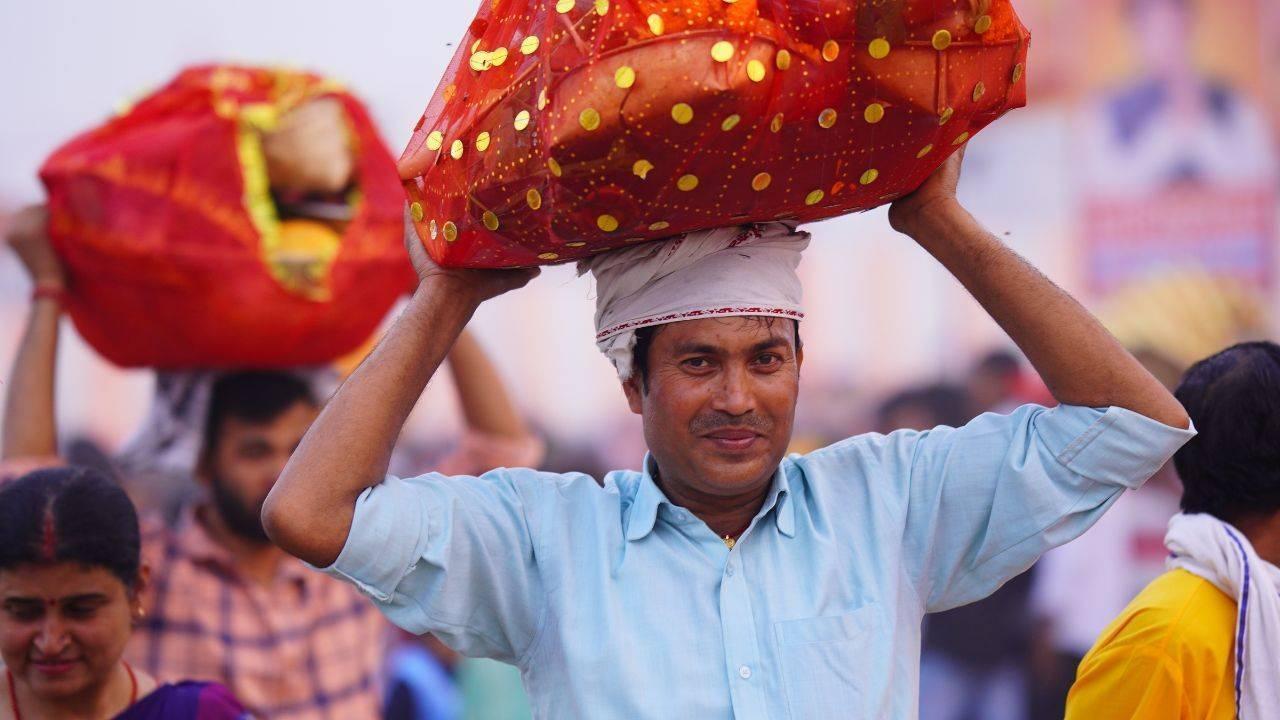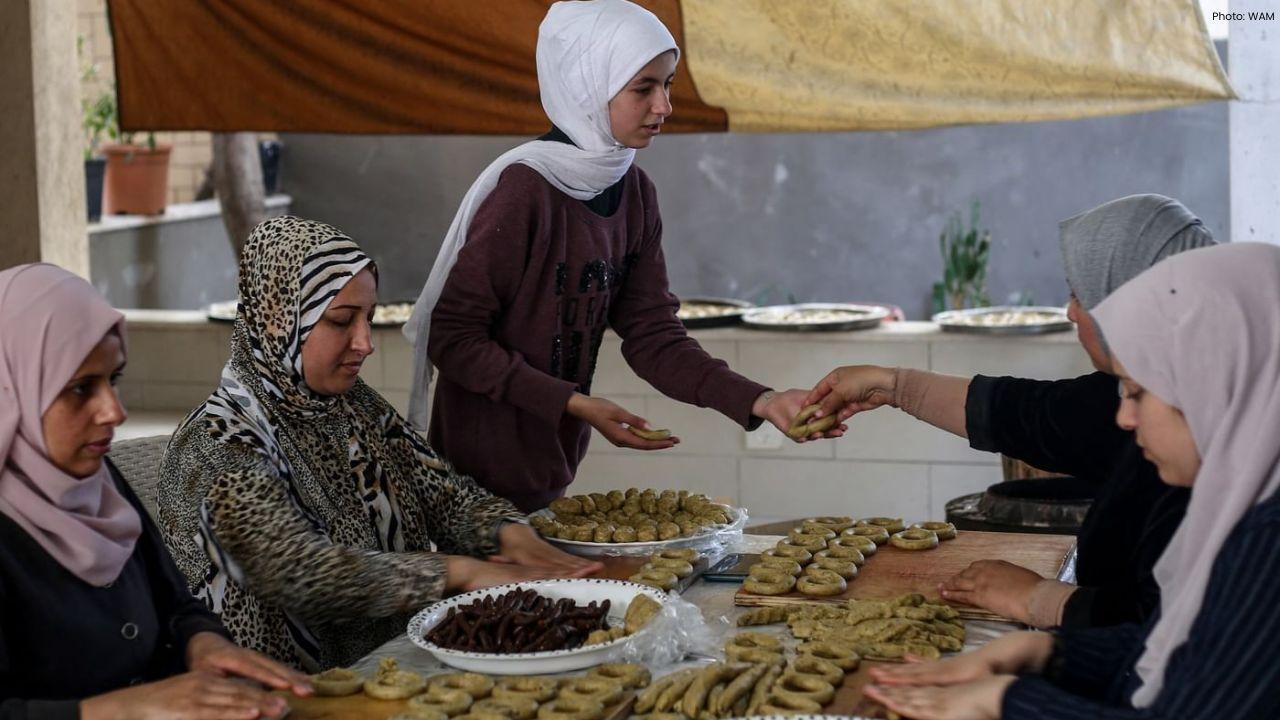
Post by : Saifi Sam
Chhath Puja is a prominent festival within Hinduism, celebrated mainly in regions such as Bihar, Jharkhand, Uttar Pradesh, and Nepal. This festival, dedicated to Lord Surya (the Sun God) and Chhathi Maiya (the Goddess of Power), embodies a rich tradition of worship, gratitude, and a deep connection with nature. Occurring six days after Diwali, Chhath Puja is distinct for its rigorous fasting, sacred bathing rituals, and offerings made along riverbanks or ponds, highlighting both devotion and environmental awareness.
Chhath Puja can be traced back to ancient Vedic practices, with references found in various sacred texts. Legends narrate how Lord Ram and Sita honored this celebration upon their return from exile, and Draupadi is said to have upheld similar traditions in the Mahabharata to safeguard her family's wellbeing.
Through the ages, the festival gained traction throughout eastern India, especially under the auspices of local kings who promoted its observance. Its enduring nature over centuries signifies its spiritual and cultural depth, venerating the Sun as a life-giving force.
Chhath Puja transcends mere celebration; it represents a profound spiritual exercise.
The festival underscores thankfulness to the Sun God, who nurtures life and sustains crops, animals, and humans. As part of the rituals, devotees perform arghya (water offerings) at sunrise and sunset, expressing wishes for health, prosperity, and longevity.
Additionally, it promotes respect for nature through ritual practices by bodies of water, cultivating awareness and cleanliness. The fasting and disciplined lifestyle reflect self-discipline, purity of thought, and resilience. The festival also emphasizes family and community, with collective participation and shared offerings enhancing bonds.
Chhath Puja is characterized by four key days, each marked by unique rituals:
1. Nahay-Khay (First Day)
On this day, devotees take a sacred bath in rivers or ponds and have a simple meal consisting of rice, lentils, and vegetables, heralding the festival's commencement. This ritual is crucial for both spiritual and physical cleansing.
2. Lohanda and Kharna (Second Day)
The observance of fasting kicks off with Kharna, where participants abstain from water until sunset. They prepare offerings including khichdi, puris, and sweets made from jaggery, followed by Lohanda, during which families engage in prayers and set up the Chhath Puja altar.
3. Sandhya Arghya (Evening Offerings)
One of the festival's core rituals, arghya is offered to the setting sun. Participants stand in water, presenting fruits, sugarcane, and thekua (a traditional treat) while singing hymns and folk songs dedicated to Chhathi Maiya.
4. Usha Arghya (Morning Offerings)
The concluding day features offerings to the rising sun, marking the end of the fasting period. This day encapsulates devotion, gratitude, and spiritual completion.
The culinary creations during Chhath Puja are simple, pure, and symbolic, embodying devotion and appreciation:
Thekua: A sweet delicacy made from wheat flour, jaggery, and ghee, representing purity.
Fruits: Seasonal fruits like bananas, sugarcane, and coconuts symbolize health and prosperity.
Rice and Lentils: Essential staples offered to the Sun, representing sustenance.
Jaggery-based sweets: Symbolizing life's sweetness and divine favor.
These offerings are prepared without any onion, garlic, or tamasic elements to ensure spiritual purity.
While Bihar and Uttar Pradesh remain the epicenters of Chhath Puja, the festival has extended to various other regions and countries. In Nepal, it is celebrated similarly by riverbanks and ponds through fasting and offerings. Communities in Jharkhand and Madhya Pradesh partake in folk songs, gatherings, and communal prayers. Indian communities abroad, particularly in nations like Mauritius, Trinidad, and Guyana, continue these traditions near lakes or constructed bodies of water. Despite the diverse expressions, the essential spiritual message of gratitude and sun worship remains steadfast.
This festival imparts invaluable lessons:
Dedication and Discipline: The rigors of fasting and rituals cultivate resilience.
Nature Appreciation: Engaging in rituals by water bodies fosters environmental concern.
Thankfulness and Community: The festival encourages an attitude of gratitude and promotes community involvement.
Health and Wellness: The dietary restrictions and fasting practices support detoxification and overall health.
Chhath Puja serves as a striking illustration of how spirituality, culture, and ecological responsibility can coalesce beautifully.
This article is intended for informational and educational purposes only. Rituals and meanings surrounding Chhath Puja may differ across regions and communities. Participants are encouraged to respect local traditions and consult knowledgeable individuals. Personal health and dietary requirements should be taken into consideration when following fasting or rituals. The authors and publishers are not liable for any consequences resulting from the practices discussed herein.










Shaheen Afridi Named Pakistan ODI Captain, Replacing Rizwan
Pakistan Cricket Board names Shaheen Shah Afridi as new ODI captain, replacing Muhammad Rizwan ahead

PSG Held to 3-3 Draw by Strasbourg in Thrilling Ligue 1 Clash
PSG and Strasbourg played a thrilling 3-3 draw in Ligue 1. Senny Mayulu’s late goal helped PSG stay

South Africa Crush Sri Lanka to Record Sixth 10-Wicket Win
Laura Wolvaardt and Tazmin Brits scored half-centuries as South Africa easily chased 121 to beat Sri

Kohli and Rohit Return for India vs Australia ODI Series
Virat Kohli and Rohit Sharma return for India’s ODI series against Australia. Aaron Finch supports t

UN Women Calls for Safe Aid and Recovery for Gaza Women
UN Women urges placing women and girls at the center of Gaza aid, recovery, and reconstruction durin

Chelsea’s Cole Palmer to Miss Six Weeks Due to Injury
Chelsea forward Cole Palmer will miss six weeks due to a groin injury, manager Maresca confirms, as